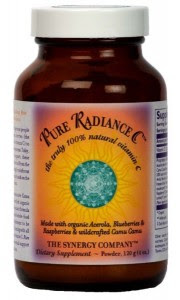Parents Must Read:
How (and Why) to Introduce Allergens to Your Infant
Reference Source: http://health.usnews.com/health-news/blogs/eat-run/2013/03/19/how-and-why-to-introduce-allergens-to-your-infant
Reference Source: http://health.usnews.com/health-news/blogs/eat-run/2013/03/19/how-and-why-to-introduce-allergens-to-your-infant
In the last decade, prevailing beliefs about timing the introduction of highly allergenic foods to babies have undergone a sea change.
For decades, parents were advised to delay introducing allergenic foods until 12 months (cow's milk dairy), 24 months (eggs) or even 36 months of age (fish, tree nuts, peanuts). Then, in 2008, the American Academy of Pediatrics (AAP) retracted its previous guidelines on the matter, acknowledging that there was insufficient evidence to support delayed introduction of allergens as a strategy to reduce the risk of food allergy. But beyond that, the organization did not offer specifics as to whether there was an ideal window during infancy to introduce these foods, nor did it comment on whether delaying introduction of foods might actually increase risk of developing food allergies.
As a result, pediatricians and parents have been in limbo since 2008, lacking clear guidelines as to whether early or delayed food introduction could help prevent babies from developing food allergies. As more observational research on solid food introduction and risk of food allergy became available, the body of evidence began to point in a relatively consistent direction: Early introduction of common food allergens seemed associated with a lower risk of developing food allergies compared to delayed introduction. Some pediatricians found these studies compelling enough to start advising parents to stop delaying the introduction of allergens past 12 months. But lacking sufficient evidence that met the "gold standard" of scientific research—randomized, controlled trials—other pediatricians continued to feel it was prudent to follow the delayed introduction approach until better evidence was available or official guidelines were issued.
This past January, however, the American Academy of Asthma, Allergy and Immunology (AAAAI) released a new set of recommendations on infant feeding practices to help prevent food allergy. The recommendations are based on the available observational research to date, and are the first guidelines to state that delaying introduction of foods like wheat, cow's milk dairy, eggs, fish and nuts may actually result in an increased risk of food allergy or eczema.
The AAAAI recommendations state that once an infant over 4 months old has tolerated a few non-allergenic solid foods (think common early solids like rice cereal, oatmeal, sweet potatoes, carrots, bananas, apples or pears), parents can proceed with introducing other more allergenic foods without delay, ideally at home rather than in day care or a restaurant. As with introducing all new solids, only one new food should be introduced every three to five days to help isolate triggers of any allergic reaction.
Importantly, the guidelines also note that exclusive breast-feeding for at least four months may be protective against cow's milk allergy in infants. Lastly, they found no significant protective benefit against food allergy when mothers avoided allergenic foods like dairy, egg and peanuts during pregnancy or lactation.
Ultimately, how to introduce allergens is a personal decision you'll make in consultation with your pediatrician. If your infant already has eczema or signs of a food allergy—or if a sibling has a peanut allergy—your pediatrician may refer you to a pediatric allergist for testing and individualised guidance.
For further details, read: http://health.usnews.com/health-news/blogs/eat-run/2013/03/19/how-and-why-to-introduce-allergens-to-your-infant
********************************************************************************************************
I've learnt this piece of information in fact from Dr Chen during one of her Live! With Dr Chen Chapters last year! Again, It's proven that we are always up to date with health information from Dr Chen's seminar! =)
Upcoming Dr Chen's Health Seminar on 13-April-14, click the below link for details:
Warm Regards,
Joselyne





































